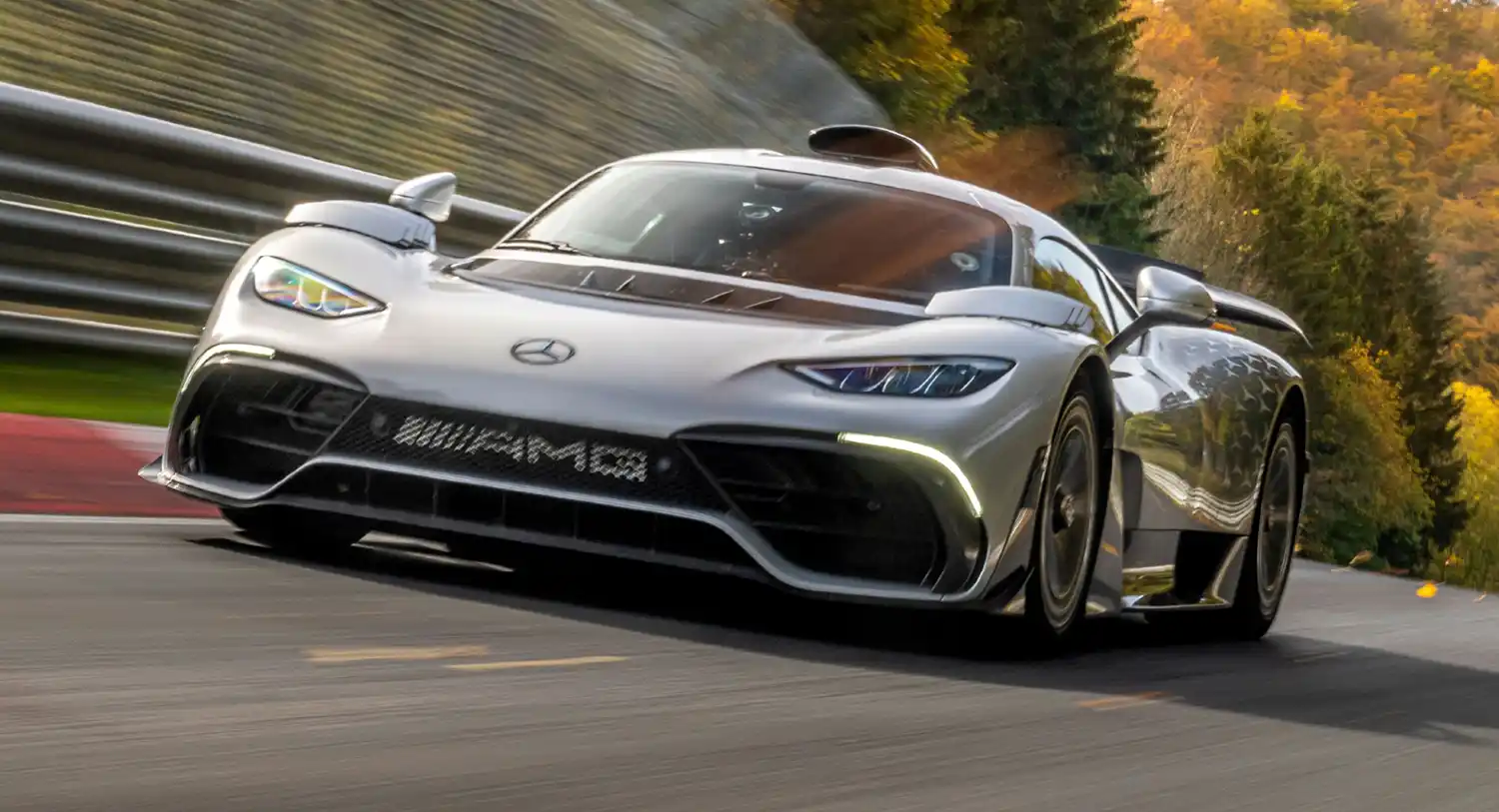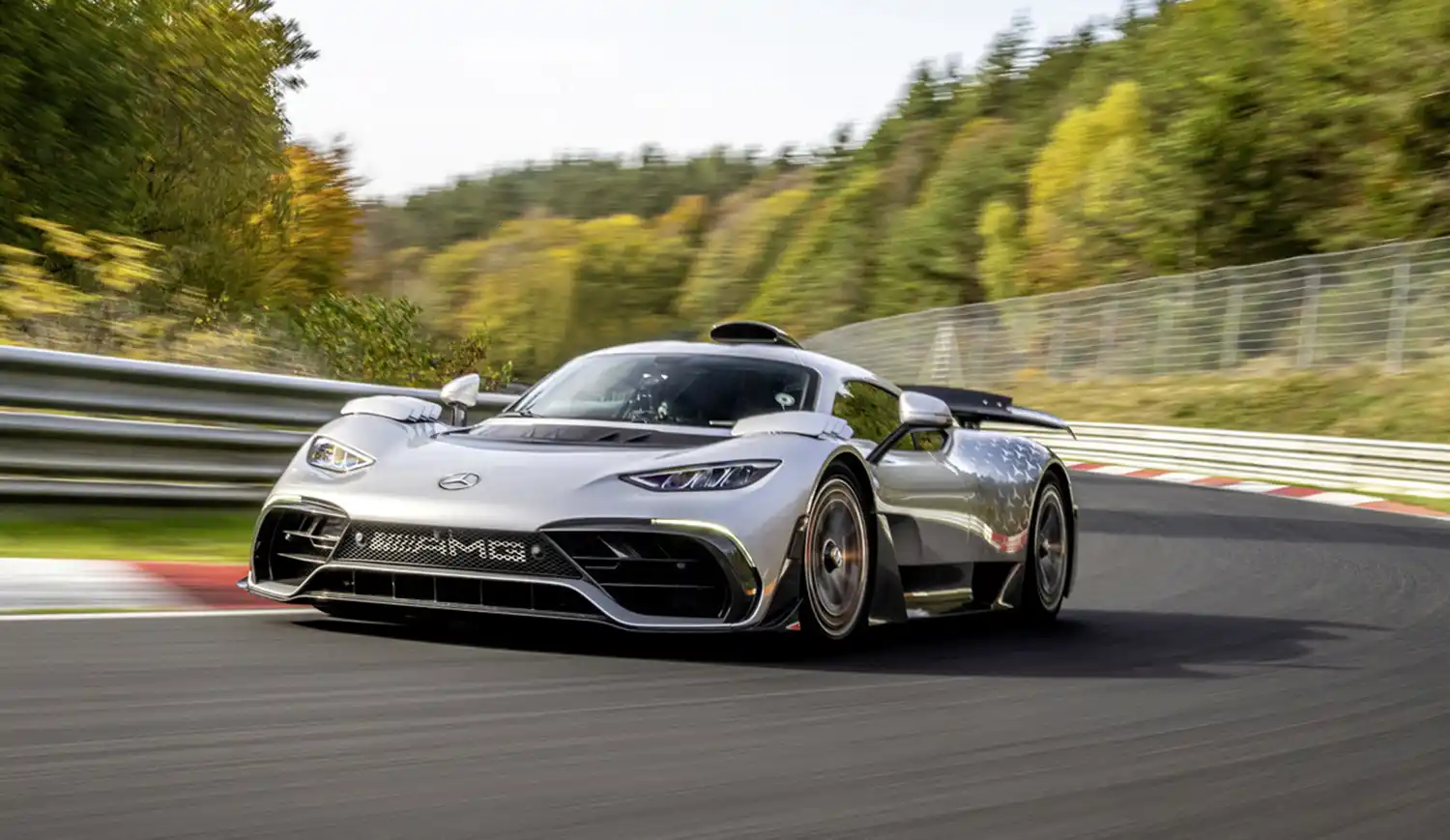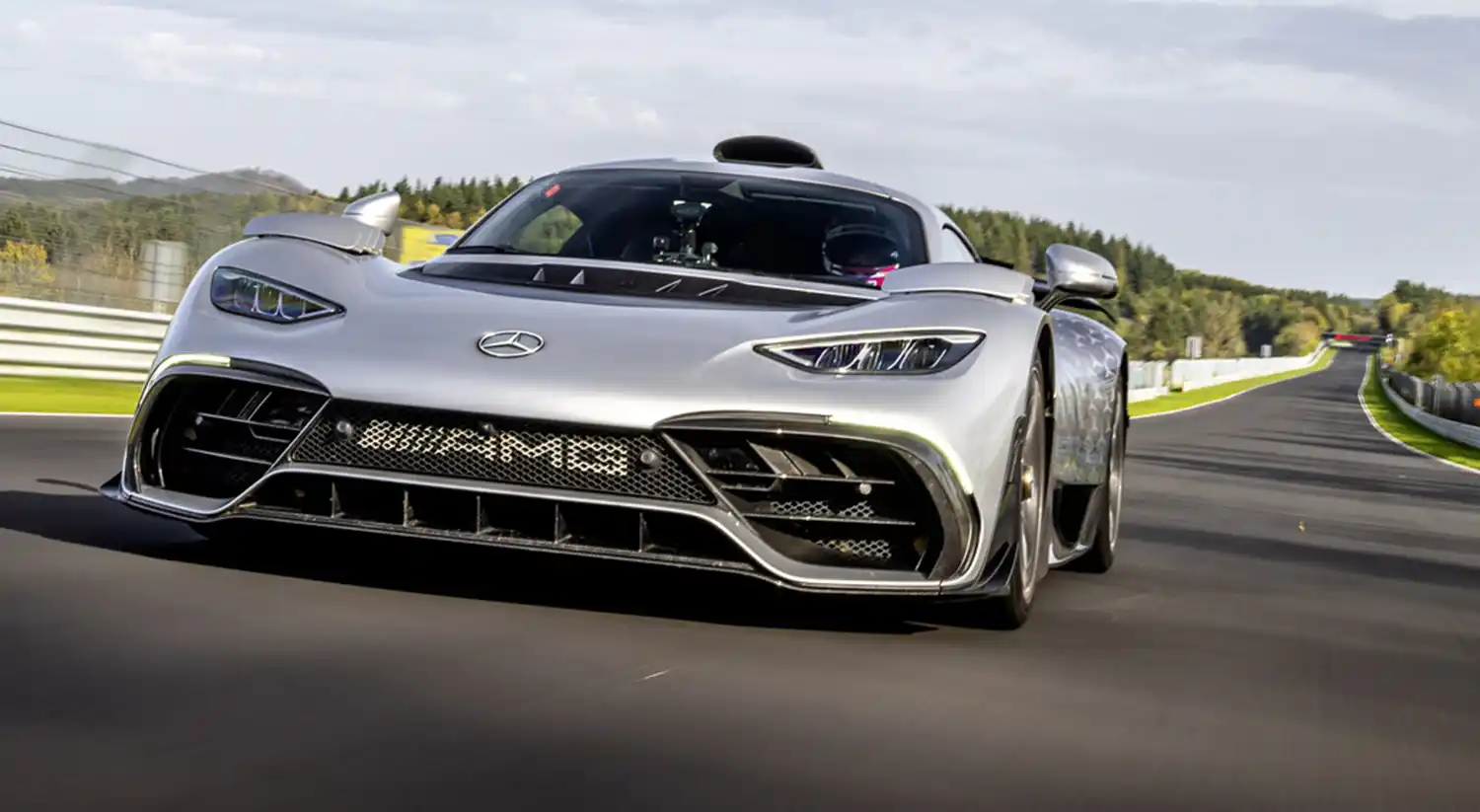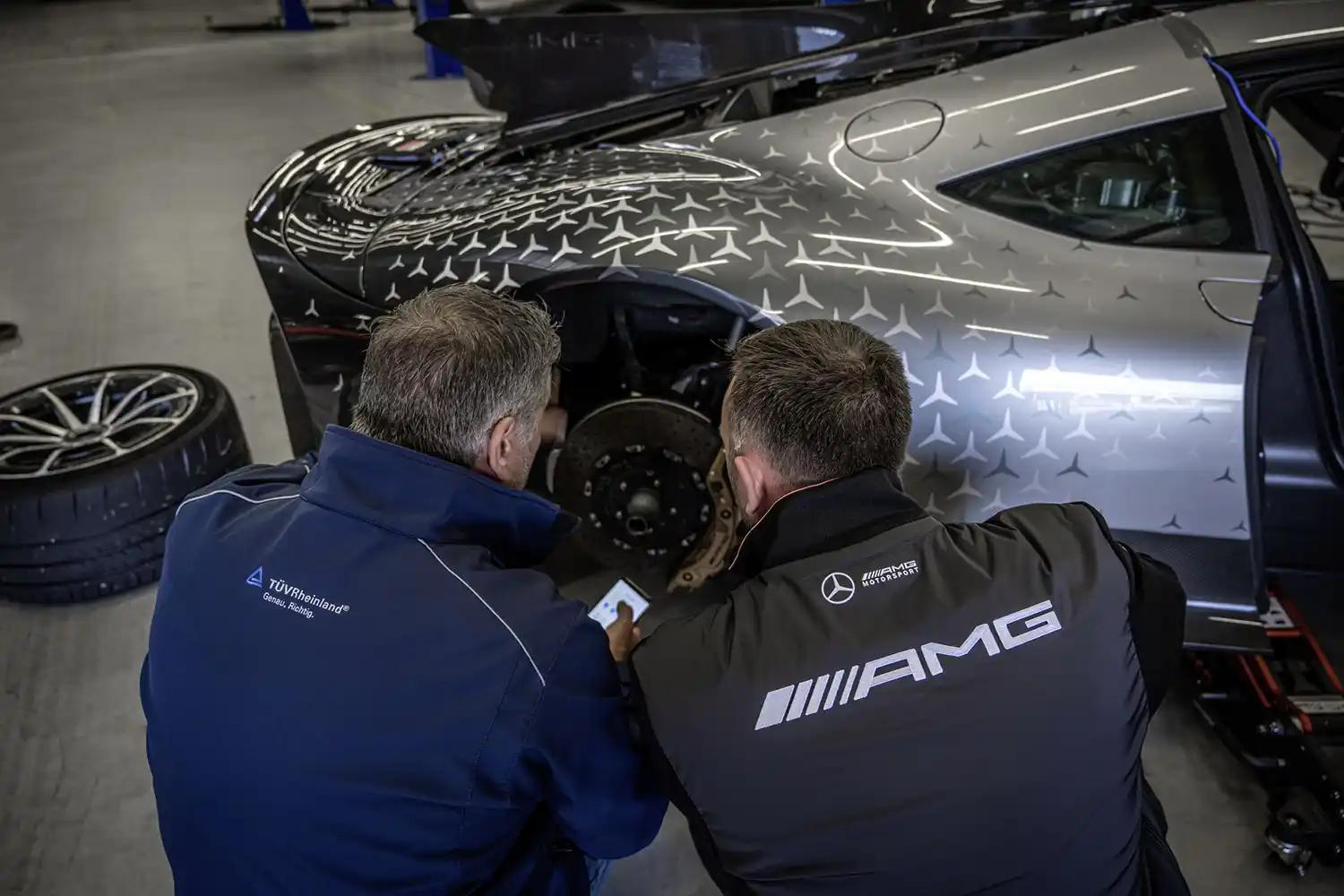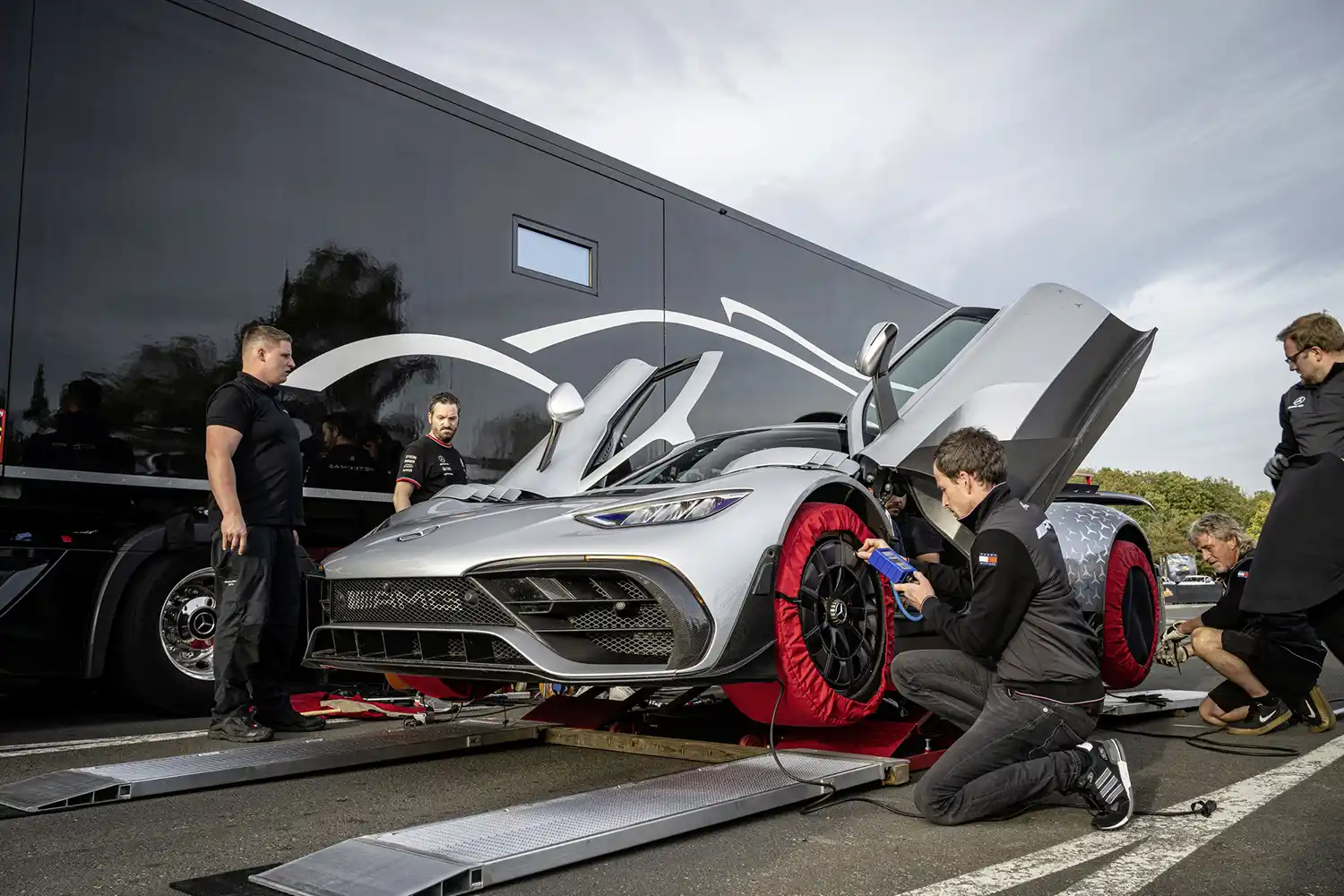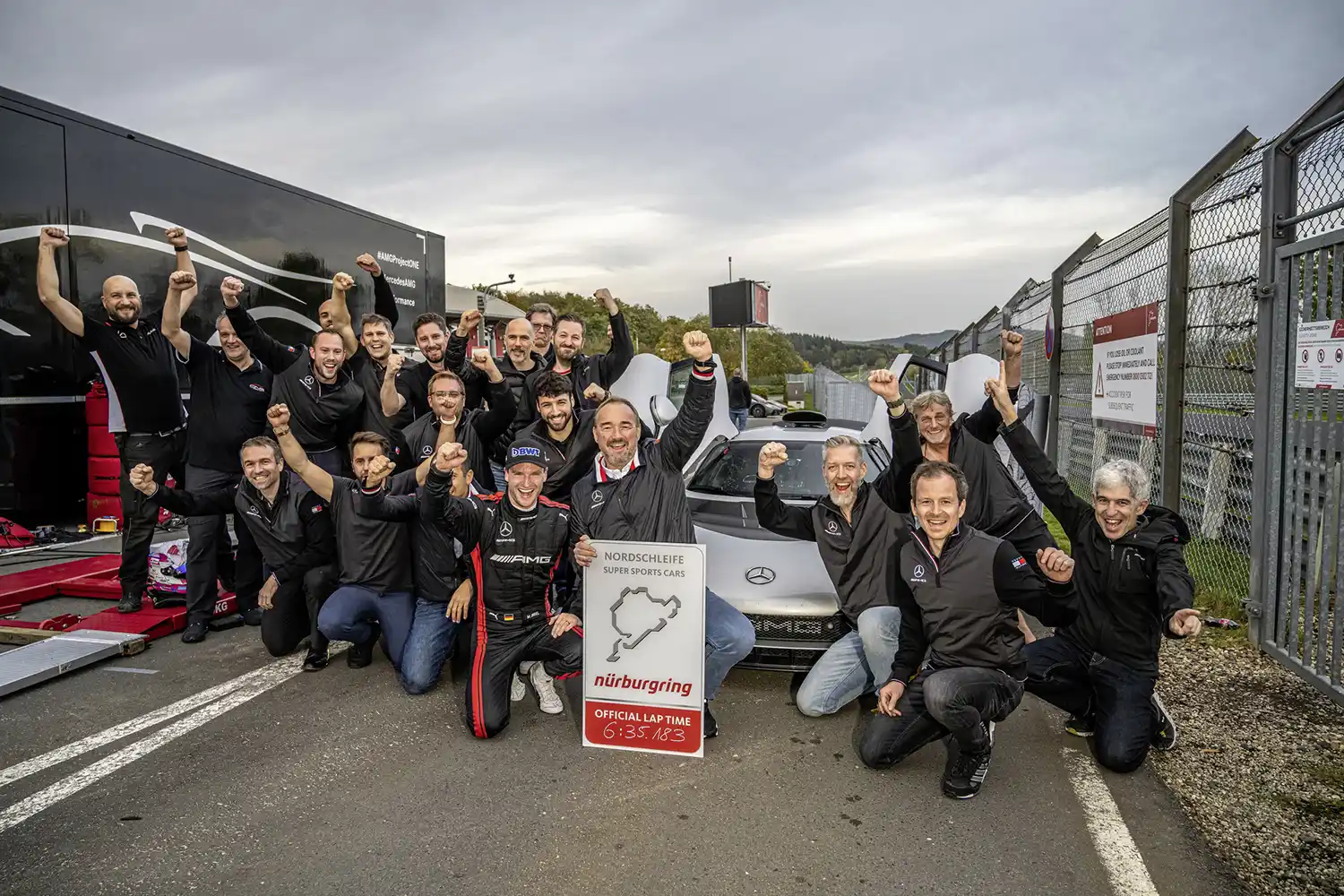
The Mercedes-AMG ONE Nürburgring record marks a defining moment in the world of road-legal hypercars. With a time of 6:35.183 minutes on the 20.832 km Nürburgring-Nordschleife, the AMG ONE now holds the title of fastest production car on the legendary circuit.
Chasing milliseconds on the Nordschleife
Maro Engel, AMG brand ambassador and racing driver, achieved the record lap on October 28, 2022. Track conditions were far from ideal, with damp patches and debris in several sections. With just one minute left before track closure, Engel launched a final attempt and posted the stunning lap time. The sport auto Super Test track variant time of 6:30.705 minutes further highlighted the car’s potential.

Strategy and skill under pressure
To extract the most from the AMG ONE, Engel relied on intelligent energy deployment. Using hybrid strategy techniques such as “lift and coast,” he managed power efficiently over the 20.8 km lap. Features like the four-stage Energy Flow Control system and the DRS-enabled aerodynamics helped maintain top speed and battery power across all sectors.
Formula 1 engineering on public roads
The Mercedes-AMG ONE is powered by a hybrid system directly derived from Formula 1. The mid-mounted 1.6L V6 turbocharged engine works with four electric motors to produce 1,063 horsepower. Torque-vectoring, all-wheel drive, and active aerodynamics make this hypercar an engineering marvel.
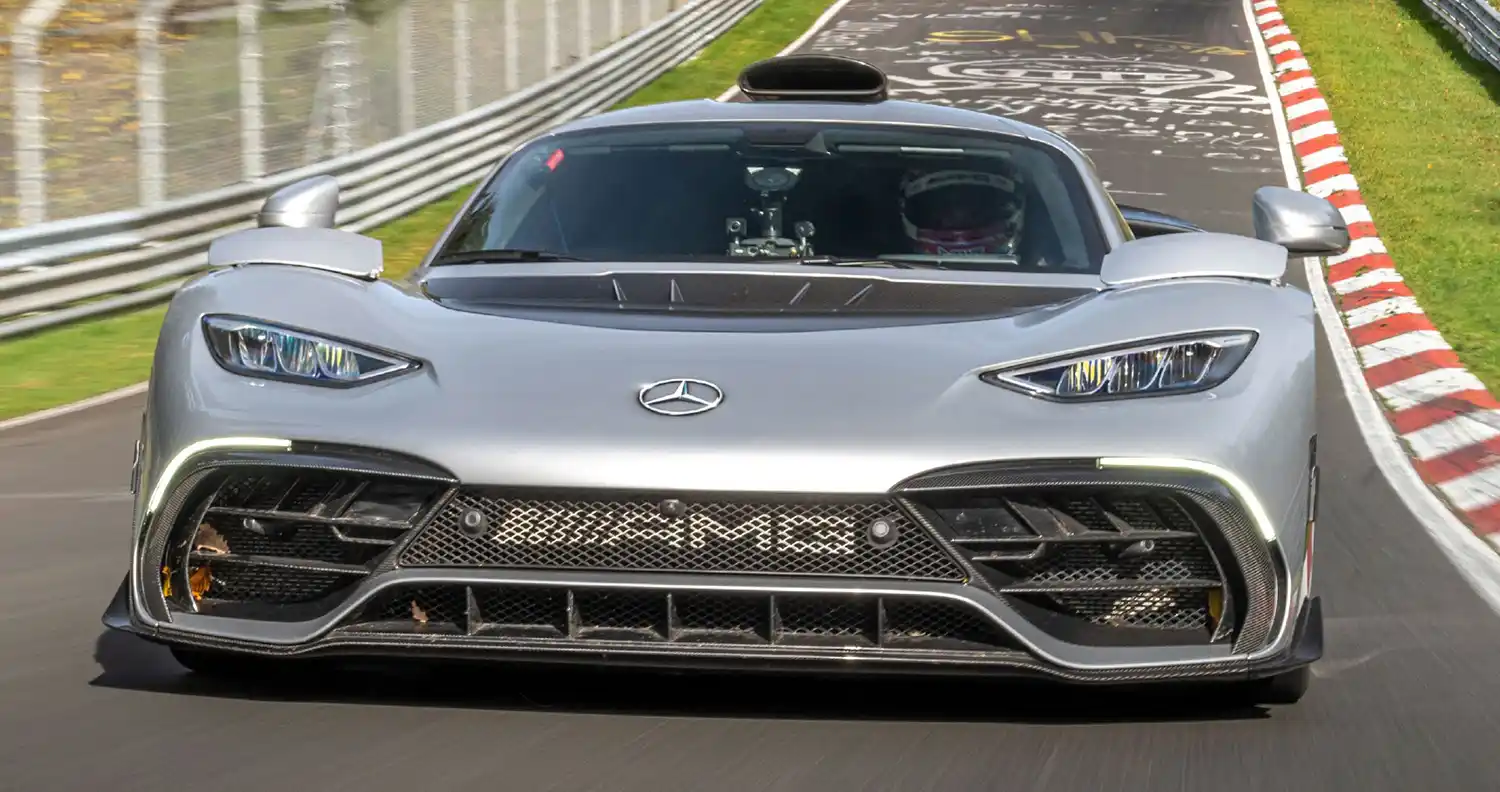
Record vehicle with full road legality
Both AMG ONEs used for the record runs were road-legal and inspected by TÜV Rheinland. A notary verified the setup and confirmed compliance. AMG selected maximum camber values and activated the “Race Plus” mode, unlocking full performance potential, tighter suspension, and 37 mm of front and 30 mm of rear ride height reduction.
Advanced cooling and battery tech
The AMG ONE’s battery uses direct cell cooling inspired by Formula 1. This maintains an optimal temperature of 45°C even under extreme load. A capacity of 8.4 kWh supports up to 18.1 km of electric range. The battery system uses 800V architecture, allowing smaller cables and reduced weight.
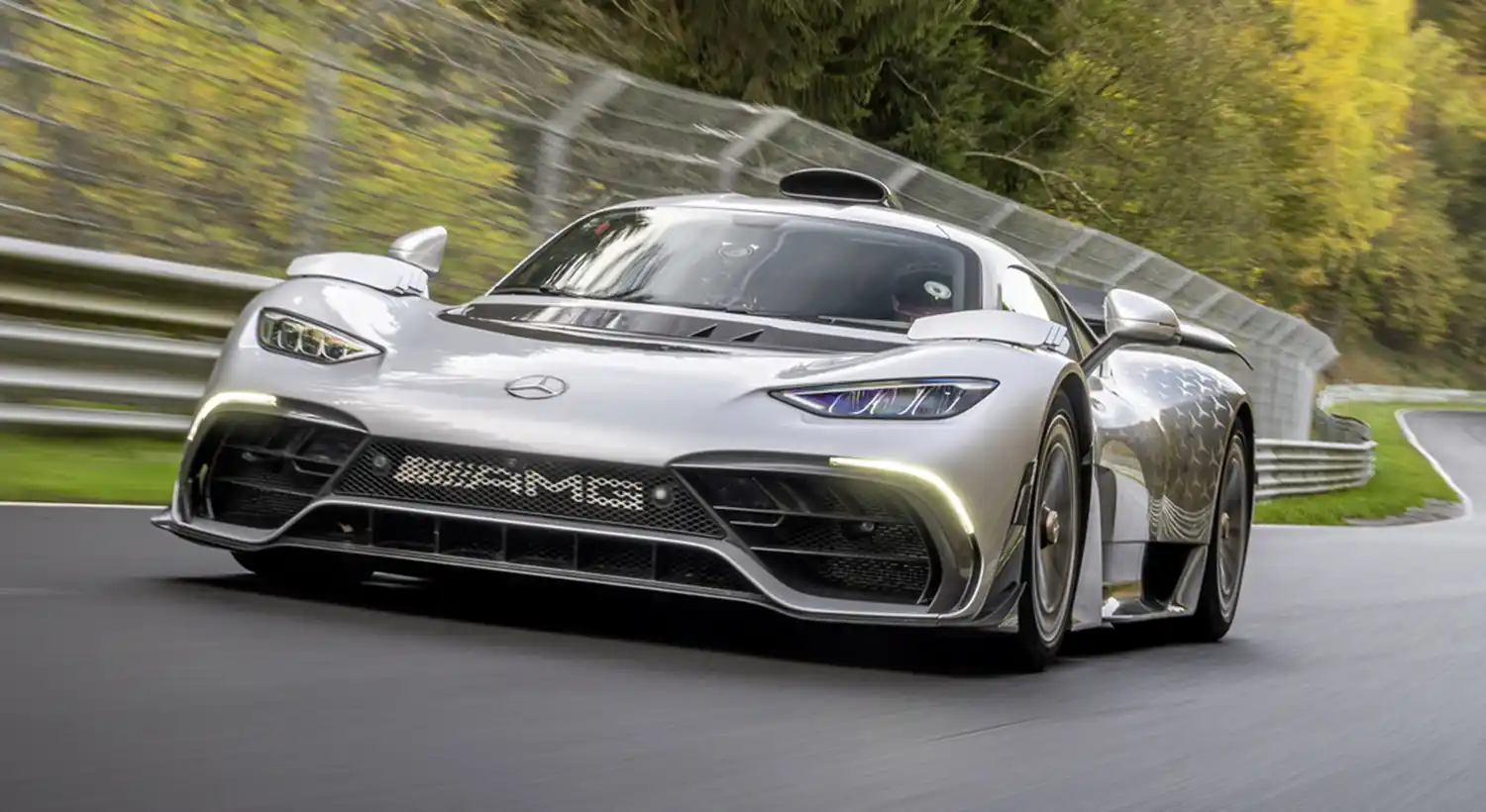
Groundbreaking turbo and exhaust design
The MGU-H turbo system uses a 90 kW electric motor to spool the turbo independently of exhaust flow, ensuring instant response. The V6 engine also features direct and port injection systems to optimize power and emissions. A lightweight titanium exhaust with advanced catalytic converters supports Euro 6 compliance.
All-wheel drive meets electric precision
Two 120 kW motors on the front axle provide pure electric drive and torque vectoring. Regenerative braking captures up to 80% of energy during deceleration. Combined with rear hybrid power, the system delivers unmatched traction and control.
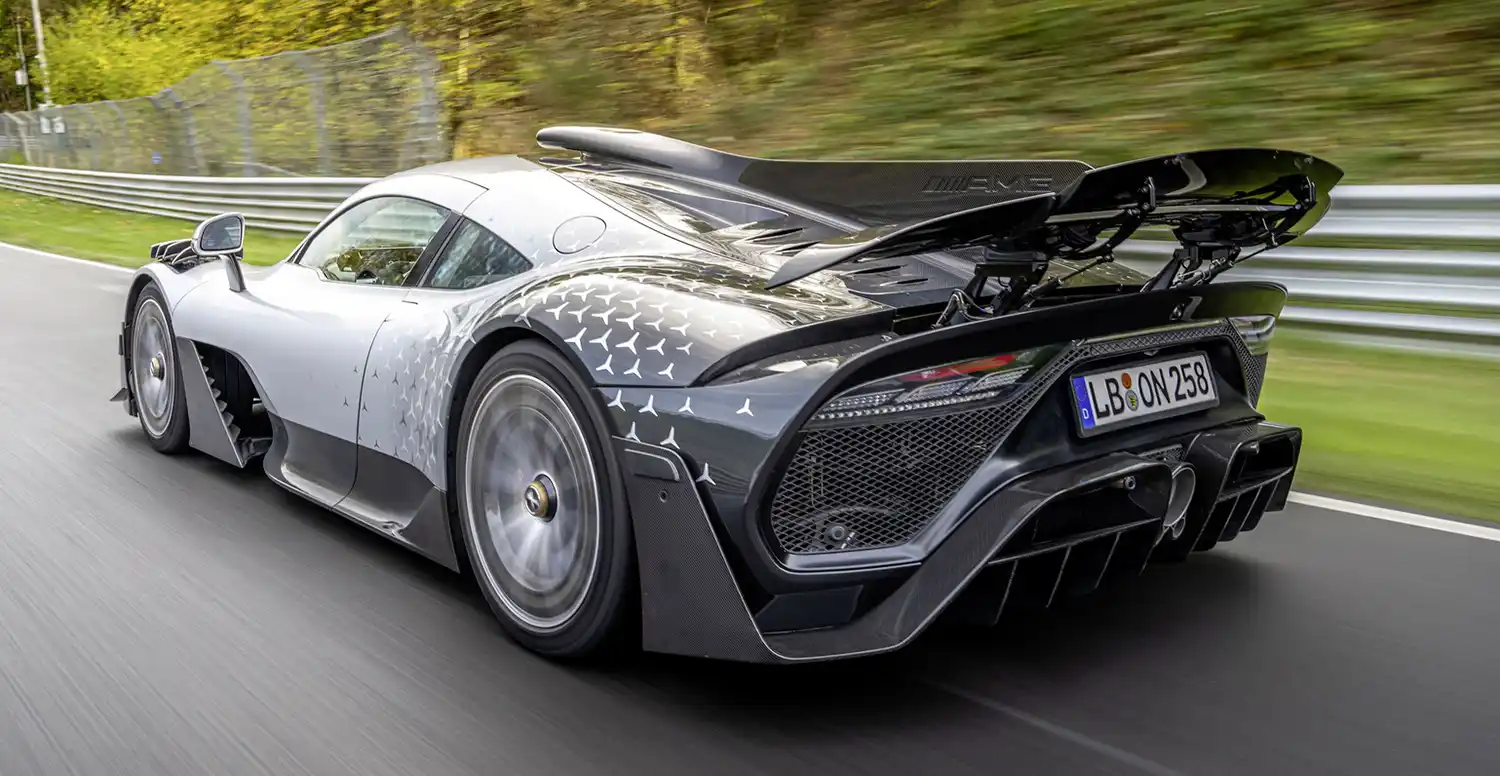
First hypercar to master the Nürburgring
Mercedes-AMG became the first brand to set an official Nürburgring record with a hypercar. The record was verified by independent timing experts and a notary. The achievement proves the AMG ONE is more than a showpiece, it’s a road car with motorsport DNA and real-world dominance.
Summary
The Mercedes-AMG ONE Nürburgring record redefines what’s possible for road-legal vehicles. With Formula 1 technology, a 1,063 hp hybrid powertrain, and intelligent energy strategies, it delivered a lap time that cements its place in automotive history.

Disclaimer: Performance figures and specifications are subject to change and based on official manufacturer data.
Source: Mercedes-Benz
